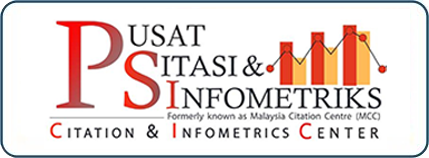Application of Oven-Dried Durian Seed Powder and Freeze-Dried Durian Seed Powder on Extending Probiotics Longevity
DOI:
https://doi.org/10.33102/mjosht.473Keywords:
Durian seed, Biopolymer, Drying techniques, SustainableAbstract
Durian seed is often wasted but it can be utilized as a biopolymer and encapsulating agent for probiotics. This is good since it is a natural and sustainable biopolymer source. However, durian seed contains a lot of impurities that may hinder the biopolymer’s functional properties. This study aims to extract gum from durian seeds, subject them to oven-drying and freeze drying to obtain durian seed powder, study both oven-dried and freeze-dried durian seed’s characteristics and the potential to use them to enhance the growth of probiotics. Freeze-dried durian seed powder has higher yield percentage, higher water holding capacity, and higher oil holding capacity than oven-dried durian seed powder. Freeze-dried durian seed powder also has more pores and more uniform structure compared to oven-dried durian seed powder, which can be seen through scanning electron microscope. Both oven-dried durian seed powder and freeze-dried durian seed powder manage to support probiotics’ growth. The probiotics’ concentration can be seen to increase after 3 days of incubation upon encapsulation via dried durian seed flour for both encapsulated probiotics with oven-dried durian seed powder and encapsulated probiotics with freeze-dried durian seed powder. Freeze-dried durian seed powder support probiotics’ growth better than oven-dried durian seed powder since the concentration of probiotics after being encapsulated with freeze-dried durian seed powder is higher than the concentration of probiotics after being encapsulated with oven-dried durian seed powder. Based on observation via scanning electron microscope, encapsulated probiotics with freeze-dried durian seed powder also has better appearance, less wrinkles and less dents compared to encapsulated probiotics with oven-dried durian seed powder.
Downloads
References
Yousefi, M., & Jafari, S. M. (2019). Recent advances in application of different hydrocolloids in dairy products to improve their techno-functional properties. Trends in Food Science & Technology, 88, 468-483.
Alam, M., Pant, K., Brar, D. S., Dar, B. N., & Nanda, V. (2024). Exploring the versatility of diverse hydrocolloids to transform techno-functional, rheological, and nutritional attributes of food fillings. Food Hydrocolloids, 146, 109275.
Pirsa, S., & Hafezi, K. (2023). Hydrocolloids: Structure, preparation method, and application in food industry. Food Chemistry, 399, 133967.
Phillips, G. O., & Williams, P. A. (Eds.). (2009). Handbook of hydrocolloids. Elsevier.
Zang, J., Xiao, P., Chen, Y., Liu, Z., Tang, D., Liu, Y., ... & Yin, Z. (2024). Hydrocolloid application in yogurt: Progress, challenges and future trends. Food Hydrocolloids, 110069.
Vaclavik, V. A., Christian, E. W., Campbell, T., (2021). Food preservation. Essentials of food science, 327-346.
Knorr, D., & Augustin, M. A. (2023). Preserving the food preservation legacy. Critical Reviews in Food Science and Nutrition, 63(28), 9519-9538.
Adeyeye, S. A. O. (2017). The role of food processing and appropriate storage technologies in ensuring food security and food availability in Africa. Nutrition & Food Science, 47(1), 122-139.
Schmitz, A., & Kennedy, P. L. (2016). Food Security and the role of food storage. In Food security in a food abundant world: An individual country perspective (pp. 1-17). Emerald Group Publishing Limited.
Martindale, W., & Schiebel, W. (2017). The impact of food preservation on food waste. British Food Journal, 119(12), 2510-2518.
Joardder, M. U., Hasan Masud, M. H. (2019). Food preservation techniques in developing countries. Food preservation in developing countries: Challenges and solutions, 67-125.
Zeuthen, P., & Bøgh-Sørensen, L. (Eds.). (2003). Food preservation techniques. Elsevier.
Amit, S. K., Uddin, M. M., Rahman, R., Islam, S. R., & Khan, M. S. (2017). A review on mechanisms and commercial aspects of food preservation and processing. Agriculture & Food Security, 6, 1-22.
Rahman, M. S., & Perera, C. O. (2007). Drying and food preservation. In Handbook of food preservation (pp. 421-450). CRC press.
Kassem, I. A., Ashaolu, T. J., Kamel, R., Elkasabgy, N. A., Afifi, S. M., & Farag, M. A. (2021). Mucilage as a functional food hydrocolloid: Ongoing and potential applications in prebiotics and nutraceuticals. Food & function, 12(11), 4738-4748.
Gao, H., Ma, L., Sun, W., McClements, D. J., Cheng, C., Zeng, H., ... & Liu, W. (2022). Impact of encapsulation of probiotics in oil-in-water high internal phase emulsions on their thermostability and gastrointestinal survival. Food Hydrocolloids, 126, 107478.
A. Aziz, N. A., & Mhd Jalil, A. M. (2019). Bioactive Compounds, Nutritional Value, and Potential Health Benefits of Indigenous Durian (Durio Zibethinus Murr.): A Review. Foods (Basel, Switzerland), 8(3), 96. https://doi.org/10.3390/foods8030096
Baraheng, S., & Karrila, T. (2019). Chemical and functional properties of durian (Durio zibethinus Murr.) seed flour and starch. Food Bioscience, 30, 100412. https://doi.org/10.1016/j.fbio.2019.100412
Montanari, A. (2017). The stinky king: Western attitudes toward the durian in colonial Southeast Asia. Food, Culture & Society, 20(3), 395-414.
Safari, S., Razali, N. A., Ibrahim, W. M. W., & Rahim, M. S. A. (2021). From farm to China: A case study of Malaysian frozen whole durian export supply chain. Economic and Technology Management Review, 16(1), 1-20.
Department of Agriculture Malaysia. (2022). Fruit Crop Statistics Malaysia 2022.
Amin, A. M., Ahmad, A. S., Yin, Y. Y., Yahya, N., & Ibrahim, N. (2007). Extraction, purification and characterization of durian (Durio zibethinus) seed gum. Food hydrocolloids, 21(2), 273-279.
Mirhosseini, H., & Amid, B. T. (2012). Influence of chemical extraction conditions on the physicochemical and functional properties of polysaccharide gum from durian (Durio zibethinus) seed. Molecules, 17(6), 6465-6480.
Varichanan, P., Shompoosang, S., & Dueramae, S. (2023). Potential Prebiotic Properties of Crude Polysaccharide Extract from Durian (Durio zibethinus Murr.) Seed Flour. Trends in Sciences, 20(11), 6770-6770.
Khaksar, G., Kasemcholathan, S., & Sirikantaramas, S. (2024). Durian (Durio zibethinus L.): Nutritional Composition, Pharmacological Implications, Value-Added Products, and Omics-Based Investigations. Horticulturae, 10(4), 342.
Lee, J. J. L., Zhao, G., Kim, J., Castillo-Zacarias, C., Ramirez-Arriaga, M. T., Parra-Saldivar, R., & Chen, W. (2018). Dual Use Of A Biopolymer From Durian ( Durio Zibethinus ) Seed As A Nutrient Source And Stabilizer For Spray Dried Lactobacillus Plantarum, 2(September), 1–9. Https://Doi.Org/10.3389/Fsufs.2018.00053
Singh, V., Singh, S. K., & Maurya, S. (2010). Microwave Induced Poly (Acrylic Acid) Modification Of Cassia Javanica Seed Gum For Efficient Hg(II) Removal From Solution. Chemical Engineering Journal, 160, 129–137.
Nep, E. I., & Conway, B. R. (2011). Physicochemical Characterization Of Grewia Polysaccharide Gum: Effect Of Drying Method. Carbohydrate Polymers, 84, 446–453.
AOAC (2000). Official methods of Analysis of AOAC International. 17th ed. Gaithersburg, MD, USA: Association of Analytical Communities.
Kumoro, A. C., & Hidayat, J. P. 2018. Functional And Thermal Properties Of Flour Obtained From Submerged Fermentation Of Durian (Durio Zibethinus Murr.) Seed Chips Using Lactobacillus Plantarum. Potravinárstvo: Slovak Journal Of Food Sciences, 12(1), P. 607-614.
Osman, G., & Ilyas, A. (2019). Different Stress Tolerance Of Spray And Freeze Dried Lactobacillus Casei Shirota Microcapsules With Different Encapsulating Agents _ Enhanced Reader.Pdf. Food Sci Biotechnol. Retrieved From Https://Doi.Org/10.1007/S10068-018-0507-X
Kamil, R. Z., Yanti, R., Murdiati, A., Juffrie, M., & Rahayu, E. S. (2020). Microencapsulation Of Indigenous Probiotic Lactobacillus Plantarum Dad-13 By Spray And Freeze-Drying: Strain-Dependent Effect And Its Antibacterial Property. Food Research, 4(December), 2181–2189. Retrieved From Https://Doi.Org/10.26656/Fr.2017.4(6).280
Ngamwonglumlert, L., & Devahastin, S. (2018). 8. Microstructure And Its Relationship With Quality And Storage Stability Of Dried Foods. Food Microstructure And Its Relationship With Quality And Stability. Elsevier Ltd. Https://Doi.Org/10.1016/B978-0-08-100764-8.00008-3
Antigo, J. L. D., Bergamasco, R. D. C., & Madrona, G. S. (2020). How Drying Methods Can Influence The Characteristics Of Mucilage Obtained From Chia Seed And Psyllium Husk. Ciência Rural, 50.
Zain, N. M., GHANI, M. A., Kasim, Z. M., & Hashim, H. (2021). Effects Of Different Drying Methods On The Functional Properties And Physicochemical Characteristics Of Chia Mucilage Powder (Salvia Hispanica L.). Sains Malaysiana, 50(12), 3603-3615.
Mirhosseini, H., Amid, B. T. And Cheong, K. W. (2013). Effect Of Different Drying Methods On Chemical And Molecular Structure Of Heteropolysaccharide–Protein Gum From Durian Seed. Food Hydrocolloids, 31(2), P. 210-219.
Lund, M. N., & Ray, C. A. (2017). Control of Maillard Reactions in foods: Strategies and chemical mechanisms. Journal of Agricultural and Food Chemistry, 65(23), 4537–4552. https://doi.org/10.1021/acs.jafc.7b00882
Hellwig, M., & Henle, T. (2014). Baking, ageing, diabetes: a short history of the Maillard reaction. Angewandte Chemie (International ed. in English), 53(39), 10316–10329. https://doi.org/10.1002/anie.201308808
Garcia-Amezquita, L. E., Tejada-Ortigoza, V., Campanella, O. H., & Welti-Chanes, J. (2018). Influence Of Drying Method On The Composition, Physicochemical Properties, And Prebiotic Potential Of Dietary Fibre Concentrates From Fruit Peels. Journal Of Food Quality, 2018.
Talens, C., Castro-Giraldez, M., & Fito, P. J. (2018). Effect of microwave power coupled with hot air drying on sorption isotherms and microstructure of orange peel. Food and Bioprocess Technology, 11(4), 723-734. https://doi.org/10.1007/s11947-017-2041-x
Jannah, S. R., Rahayu, E. S., Yanti, R., Suroto, D. A., & Wikandari, R. (2022). Study of Viability, Storage Stability, and Shelf Life of Probiotic Instant Coffee Lactiplantibacillus plantarum Subsp. plantarum Dad-13 in Vacuum and Nonvacuum Packaging at Different Storage Temperatures. International Journal of Food Science, 2022, 1–7. https://doi.org/10.1155/2022/1663772
Downloads
Published
Issue
Section
License
Copyright (c) 2025 Ahmad Naim Rohaizan, Latiffah Karim, Siti Radhiah Omar, Syamila Mansor, Nur Huda Faujan, Jeehan Nusair

This work is licensed under a Creative Commons Attribution 4.0 International License.
The copyright of this article will be vested to author(s) and granted the journal right of first publication with the work simultaneously licensed under the Creative Commons Attribution 4.0 International (CC BY 4.0) license, unless otherwise stated.














